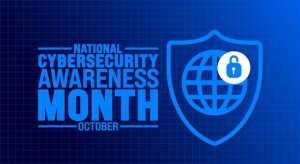 Cyberattacks continue to surge. Over the past four years, the average number of weekly attacks per organization has more than doubled — from 818 in 2021 to nearly 2,000 in 2025. In just the past two years, global attacks have increased by 58%, signaling that no business is immune.
Cyberattacks continue to surge. Over the past four years, the average number of weekly attacks per organization has more than doubled — from 818 in 2021 to nearly 2,000 in 2025. In just the past two years, global attacks have increased by 58%, signaling that no business is immune.
According to the World Economic Forum’s Global Cybersecurity Outlook 2025, the threat landscape is becoming increasingly complex. With geopolitical tensions, AI-driven exploits, and a widening cybersecurity skills gap, organizations—especially small and mid-sized businesses—are struggling to maintain resilience.
As Cybersecurity Awareness Month approaches this October, Integrated Technology Systems highlights the top trends and challenges shaping the digital security environment in 2025.
The top trends and challenges shaping the digital security environment in 2025.
1. Cybersecurity Budgets Tighten While AI Steps In
Despite the growing number of attacks, cybersecurity budgets are slowing. Spending growth has dipped from 17% in 2022 to just 4% in 2025. Meanwhile, a shortage of skilled professionals has forced businesses to rely on AI for detection and defense. However, this technology gap also opens new risks—as bad actors leverage the same AI tools to launch increasingly sophisticated attacks.
2. AI Agents Fuel Both Sides of the Battle
Cybercriminals are using Generative AI to craft advanced phishing emails, automate identity theft, and exploit zero-day vulnerabilities. Reports show that hackers are even using AI to generate malicious code and select high-value targets. This dual-use of AI has transformed the cybersecurity landscape into a digital arms race—one that requires vigilance, human oversight, and expert-managed solutions.
3. Social Engineering and Human Trust Remain Weak Links
Groups like *Scattered Spider* have successfully infiltrated major corporations by impersonating employees or contractors. As phishing and impersonation attacks evolve, cybersecurity awareness among staff becomes just as critical as technological defense. At Integrated Technology Systems, we remind clients that cybersecurity is not just an IT skill—it’s a life skill.
4. Deepfakes Become a Cybercriminal’s Favorite Weapon
The rise of deepfake technology has introduced new risks. From fake video calls with cloned executives to AI-generated voices used in scams, these tools have enabled massive frauds—like the $25 million theft from a UK engineering firm. Businesses must implement robust identity verification and multi-factor authentication to mitigate these threats.
5. Governments Respond with Stronger Cyber Laws
The global response to cybercrime is intensifying. The EU has rolled out major initiatives such as the Cyber Resilience Act and AI Act, while the UK has announced a ban on ransomware payments for public entities.
These measures signal a shift toward accountability and resilience—but businesses must act proactively to stay compliant and secure.
6. AI in Defense: Governments Lead the Way
From the U.S. Department of Defense partnering with OpenAI to European governments receiving free cybersecurity services from Microsoft, AI is becoming central to national defense strategies. Private organizations can take a cue from these initiatives by leveraging AI-powered monitoring and detection tools—guided by trusted cybersecurity professionals.
7. The Cybersecurity Talent Shortage Persists
Only 14% of organizations report having adequate cybersecurity expertise in-house. Small businesses are the most vulnerable. That’s why outsourcing IT security to trusted managed service providers like Integrated Technology Systems is becoming a strategic necessity rather than a luxury.
8. Ransomware Remains the #1 Threat
Despite growing awareness, ransomware attacks continue to surge, targeting both small businesses and large enterprises. Attackers are more strategic—often infiltrating networks for months before launching an attack.
Regular backups, network segmentation, and real-time monitoring are key to preventing catastrophic data loss.
9. Regulatory Compliance Becomes a Business Priority
Compliance isn’t just about avoiding fines—it’s about maintaining customer trust. Frameworks like NIST, CMMC, and GDPR are increasingly being enforced across industries. Integrated Technology Systems helps businesses navigate compliance while strengthening their cybersecurity posture.
10. Building a Culture of Cyber Resilience
Technology alone cannot stop cybercrime. Building a security-first culture, training employees, and staying current with evolving threats are the most powerful defenses. Integrated Technology Systems partners with clients to design, implement, and manage custom cybersecurity solutions that evolve with emerging risks.
Protect Your Business Before It’s Too Late
Cyber threats are no longer a distant possibility—they’re an everyday reality. This Cybersecurity Awareness Month, take action with Integrated Technology Systems. Our experts specialize in proactive defense, threat monitoring, compliance management, and employee training—everything you need to secure your business for the future.
Call us today to schedule your cybersecurity consultation.
Integrated Technology Systems
6 East 45th Street, Suite 400
New York, NY 10017
212-750-5420
https://www.itsnyc.com



